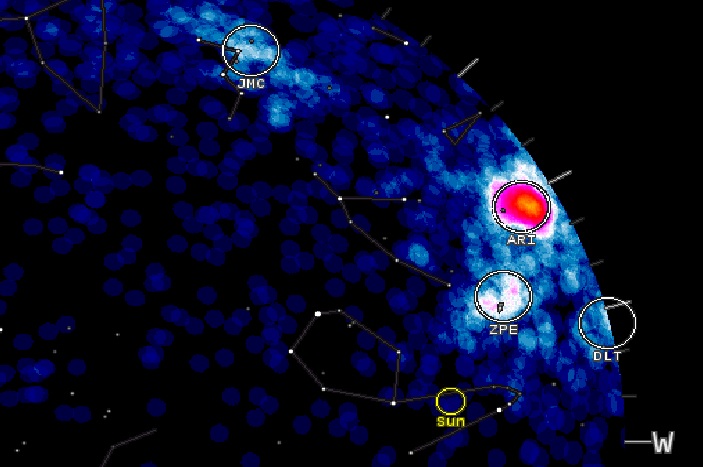This week, Earth is passing through a stream of debris from an unknown source, and the encounter is causing a meteor shower in broad daylight.
This happens every year in early June, and the resulting Arietid meteor shower typically peaks on June 7th.
Astronomers know the shower is underway because the meteors reflect radio waves. There is a hot spot of activity currently in the constellation Aries not far from the sun:

Arietid Meteor Shower
If you could turn off the sun, you would see more than 60 meteors per hour, making it one of the most active showers of the year.
No one is sure where Arietid meteoroids come from, although some astronomers suspect they are debris from sungrazing asteroid 1566 Icarus. Another candidate is comet 96P/Machholz.
How to watch the Arietid Meteor Shower
There is way to see a few of these meteors. Try looking just before sunrise. The shower’s radiant (ARI in the radar map above) rises in the east about 45 minutes before the sun. At that time of day, Arietids meteors tend to skim horizontally through the upper atmosphere from radiants near the horizon. Spectacular Earthgrazers are usually slow and bright, streaking far across the sky.
Too bad that the shooting stars are mostly invisible to the human eye as it is one of the most actie showers of the year.











